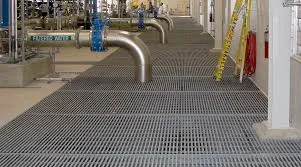grp storage tank
Understanding GRP Storage Tanks Advantages and Applications
Glass Reinforced Plastic (GRP) storage tanks, also known as fiberglass tanks, are increasingly becoming the preferred choice for numerous industries due to their unique properties and benefits. These tanks are made from a polymer matrix that is reinforced with glass fibers, providing exceptional strength, durability, and corrosion resistance.
Understanding GRP Storage Tanks Advantages and Applications
Another major benefit of GRP storage tanks is their resistance to corrosion. In many industries, storage tanks are exposed to harsh chemicals, humidity, and other challenging environmental conditions. GRP tanks withstand these factors without deteriorating, unlike metal tanks that can rust or corrode over time. This durability not only extends the lifespan of the tanks but also reduces maintenance costs, making GRP an economically favorable option in the long run.
grp storage tank

GRP tanks are also designed with advanced technology that allows for superior insulation properties. This is particularly important for industries that require temperature-sensitive materials, such as food and beverage, pharmaceuticals, and chemical manufacturing. The insulation prevents heat loss or gain, ensuring that stored materials maintain their desired temperature and quality.
Moreover, GRP storage tanks are environmentally friendly. The manufacturing process of fiberglass materials emits fewer pollutants compared to traditional metal production. Additionally, these tanks can be reused and recycled, minimizing waste and promoting sustainability within various industries.
In conclusion, GRP storage tanks offer a combination of strength, lightweight design, corrosion resistance, thermal insulation, and environmental benefits. Their diverse applications range from agricultural storage to chemical processing, proving to be an indispensable asset across multiple sectors. As industries continue to seek efficient and sustainable storage solutions, the use of GRP tanks is likely to grow, leading to enhanced operational efficiency and reduced environmental impact.
Latest news
-
Oblate Tanks: Space-Saving, Durable Liquid Storage SolutionsNewsAug.27,2025
-
High-Performance Piping System Solutions for Industry & Commercial UseNewsAug.26,2025
-
Precision Fittings: Durable & Reliable Industrial & Plumbing SolutionsNewsAug.25,2025
-
Practical Steps: Unlock Success with Our Proven GuidesNewsAug.24,2025
-
Transport Tanks: Safe, Durable & Efficient Liquid HaulingNewsAug.23,2025
-
High-Quality Piping Systems for Efficient Flow & DurabilityNewsAug.22,2025











